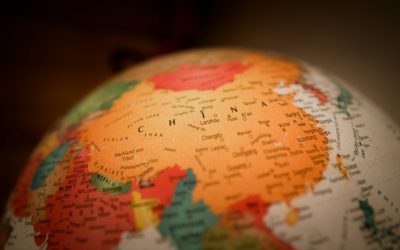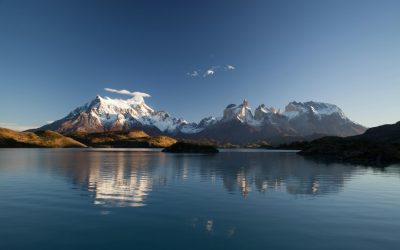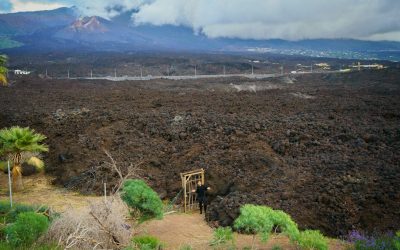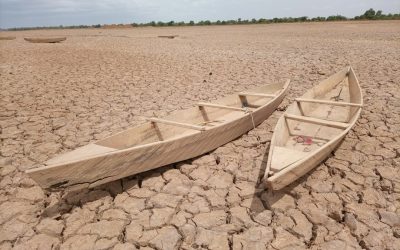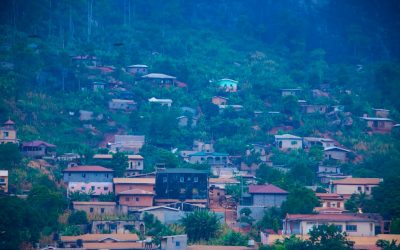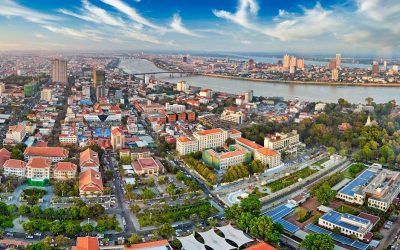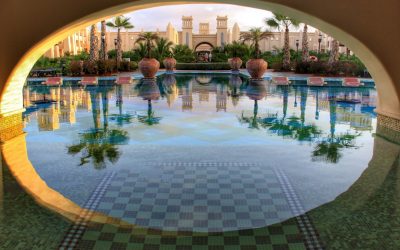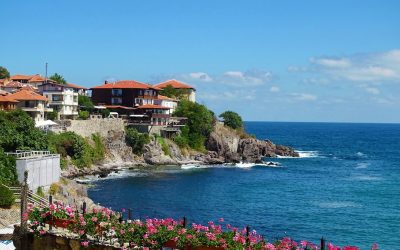World Geography
Geography is the study of the Earth’s landscapes, environments, and the relationships between people and their surroundings. It encompasses both the physical aspects of the Earth, such as its landforms, bodies of water, and climate, as well as the human aspects, including population distribution, cultures, and economies. World geography is a broad field that seeks to understand the complexities of our planet and how humans interact with it. By studying world geography, we can gain a deeper appreciation for the diversity of our planet and the interconnectedness of its various regions.
Geography is a multidisciplinary field that draws on elements of physical science, social science, and humanities. It involves the use of maps, spatial analysis, and geographic information systems (GIS) to understand the Earth’s surface and the processes that shape it. World geography also encompasses the study of human geography, which examines the ways in which people and their activities are distributed across the Earth. By understanding world geography, we can better appreciate the environmental, cultural, and economic challenges facing different regions of the world. This knowledge is crucial for addressing global issues such as climate change, resource management, and international development.
The Five Oceans and Seven Continents
The Earth’s surface is divided into five major oceans: the Pacific, Atlantic, Indian, Southern (or Antarctic), and Arctic Oceans. These vast bodies of water play a crucial role in regulating the Earth’s climate and supporting diverse marine ecosystems. The oceans also serve as important transportation routes and a source of food and other natural resources for human societies around the world.
In addition to the oceans, the Earth’s landmasses are divided into seven continents: Africa, Antarctica, Asia, Europe, North America, Australia (or Oceania), and South America. Each continent has its own unique physical and cultural characteristics, shaped by millions of years of geological processes and human history. From the deserts of Africa to the rainforests of South America, the continents offer a rich tapestry of landscapes and environments for exploration and study.
Major Mountain Ranges and Deserts
The Earth’s surface is also marked by major mountain ranges and deserts that have shaped the planet’s physical and cultural landscapes. The Himalayas, for example, are the highest mountain range in the world and are home to diverse ecosystems and cultures in countries such as India, Nepal, and Bhutan. The Andes in South America, the Rockies in North America, and the Alps in Europe are other prominent mountain ranges that have influenced human settlement patterns and economic activities.
Deserts cover about one-third of the Earth’s land surface and are characterized by low precipitation and extreme temperatures. The Sahara Desert in Africa is the largest hot desert in the world, while the Gobi Desert in Asia is one of the largest cold deserts. Deserts are not only home to unique flora and fauna but have also been important trade routes and cultural crossroads throughout history.
Climate Zones and Biomes
The Earth’s climate is influenced by a variety of factors, including latitude, altitude, ocean currents, and prevailing winds. As a result, the planet is divided into different climate zones, each with its own characteristic weather patterns and ecosystems. The equator, for example, experiences a tropical climate with high temperatures and heavy rainfall, while the polar regions have a cold and dry climate.
These climate zones give rise to different biomes, or large ecological areas characterized by distinct plant and animal communities. The tropical rainforest biome, found near the equator, is home to a diverse array of species and is vital for regulating the Earth’s climate. The grasslands biome, found in regions such as the African savannah and North American prairies, supports grazing animals and has been important for human agriculture throughout history.
Human Geography and Population Distribution
Human geography examines the ways in which people and their activities are distributed across the Earth’s surface. It encompasses topics such as population growth, migration patterns, urbanization, and cultural diversity. Understanding human geography is crucial for addressing global challenges such as poverty, inequality, and environmental degradation.
Population distribution is uneven across the world, with some regions experiencing rapid population growth while others are declining. The majority of the world’s population lives in Asia, particularly in countries such as China and India. Urban areas are also growing rapidly, with more than half of the world’s population now living in cities. This trend has significant implications for infrastructure development, resource management, and social inequality.
Historical and Cultural Geography
Historical geography examines how human activities have shaped the Earth’s landscapes over time. It explores topics such as colonialism, trade routes, and the rise and fall of empires. Cultural geography focuses on how human cultures have developed in different regions of the world and how they interact with their environments.
The Silk Road, for example, was an ancient trade route that connected China with Europe and facilitated the exchange of goods, ideas, and technologies across Eurasia. This historical trade route had a profound impact on the development of cultures and economies along its path. Similarly, cultural geographers study how different societies have adapted to their environments through practices such as agriculture, architecture, and religious beliefs.
The Importance of Geographic Knowledge
Geographic knowledge is crucial for addressing global challenges such as climate change, resource management, and international development. By understanding world geography, we can better appreciate the environmental, cultural, and economic challenges facing different regions of the world. This knowledge is crucial for addressing global issues such as climate change, resource management, and international development.
Geographic knowledge also helps us to understand our interconnectedness with other regions of the world. By studying world geography, we can gain a deeper appreciation for the diversity of our planet and the interconnectedness of its various regions. This understanding can foster a sense of global citizenship and empathy for people from different cultures and backgrounds.
In conclusion, world geography is a complex and multifaceted field that encompasses both physical and human aspects of the Earth’s landscapes. By studying world geography, we can gain a deeper appreciation for the diversity of our planet and the interconnectedness of its various regions. This knowledge is crucial for addressing global challenges such as climate change, resource management, and international development. It also helps us to understand our interconnectedness with other regions of the world and fosters a sense of global citizenship.
FAQs
What is world geography?
World geography is the study of the Earth’s landscapes, environments, and the relationships between people and their environments. It encompasses the physical features of the Earth, as well as the human activity that takes place on it.
Why is world geography important?
World geography is important because it helps us understand the world around us. It provides insights into the physical and human processes that shape our planet, and helps us make informed decisions about how to interact with our environment.
What are the main branches of world geography?
The main branches of world geography include physical geography, which focuses on the Earth’s natural features and processes, and human geography, which examines the relationships between people and their environments.
How does world geography impact our daily lives?
World geography impacts our daily lives in numerous ways, from influencing the weather and climate we experience, to shaping the availability of natural resources and influencing the distribution of populations and cultures around the world.
What are some key concepts in world geography?
Key concepts in world geography include location, place, human-environment interaction, movement, and region. These concepts help geographers understand and interpret the world around them.
Discovering the Hidden Gems of Colombia: A Journey Through South America’s Best Kept Secret
Colombia, a country located in the northwestern region of South America, is a destination that has long been overlooked by travelers. However, in recent years, it has emerged as one of the most exciting and vibrant countries to visit. This blog post aims to uncover the treasures of Colombia and showcase why it should be your next travel destination. From its rich history and culture to its natural wonders and vibrant cities, Colombia offers a diverse range of experiences for every type of traveler. Whether you’re interested in exploring ancient ruins, hiking through lush rainforests, relaxing on pristine beaches, or immersing yourself in the vibrant local culture, Colombia has it all. Summary Colombia is a treasure trove of history, culture, natural wonders, vibrant cities, beaches, coffee regions, cuisine, festivals, art and music. The country’s rich history and culture are reflected in its architecture, museums, and traditions. From the Andes to the Amazon, Colombia’s natural wonders offer breathtaking landscapes and diverse wildlife. Bogotá, Medellín and Cartagena are vibrant cities with unique attractions, from street art to colonial architecture. Colombia’s Caribbean and Pacific coasts boast some of the best beaches in the world, with crystal-clear waters and white sand. The Rich History and Culture of Colombia Colombia’s history dates back thousands of years, with evidence of human habitation dating back to at least 12,000 BCE. The country was home to several indigenous cultures, including the Muisca, Tayrona, and Quimbaya civilizations. These ancient civilizations left behind a rich cultural heritage, which can still be seen today in the form of archaeological sites, traditional crafts, and indigenous communities. In the 16th century, Colombia...
Exploring China’s Rich Cultural Heritage: A Journey Through Time
China has a rich and diverse cultural history that spans thousands of years. From ancient dynasties to modern times, China has been home to a wide range of artistic, intellectual, and culinary traditions. Preserving this cultural heritage is of utmost importance, as it not only provides a window into the past, but also shapes the identity and values of the Chinese people today. Summary China’s cultural heritage is rich and diverse, spanning thousands of years. The ancient dynasties of China left behind impressive architectural and artistic achievements. Chinese literature and philosophy have had a profound impact on the world. Chinese cuisine and traditions are beloved around the globe. Chinese music, dance, festivals, and martial arts are all unique and fascinating aspects of the country’s culture. The Ancient Dynasties of China China’s history is marked by a series of dynasties, each with its own unique contributions and achievements. The Xia Dynasty, believed to be the first dynasty in Chinese history, laid the foundation for subsequent dynasties with its establishment of a centralized government and irrigation systems. The Shang Dynasty is known for its advancements in bronze casting and the development of a system of writing. The Zhou Dynasty introduced the concept of the Mandate of Heaven, which legitimized the rule of emperors based on their moral character. The Qin Dynasty is perhaps most famous for the construction of the Great Wall of China and the unification of various warring states into one empire. The Han Dynasty is considered a golden age in Chinese history, with advancements in science, technology, and arts. The Tang Dynasty is known for its flourishing poetry...
Exploring the Hidden Gems of Burundi: A Journey Through the Heart of Africa
Nestled in the heart of East Africa, Burundi is a small landlocked country that often goes unnoticed by travelers. However, this hidden gem is a treasure trove of natural wonders, rich culture, and warm hospitality. Located between Rwanda, Tanzania, and the Democratic Republic of Congo, Burundi has a tumultuous history but is now emerging as an up-and-coming travel destination. Burundi’s history dates back centuries, with influences from various African kingdoms and colonial powers. The country gained independence from Belgium in 1962 and has since faced political instability and conflict. Despite these challenges, Burundi has managed to preserve its unique cultural heritage and natural beauty. Key Takeaways Burundi is a hidden gem in Africa with rich culture, natural wonders, historical sites, and vibrant markets. The country boasts of mountains, lakes, and wildlife, making it a perfect destination for nature lovers. Burundi’s friendly and hospitable people make it a great place to experience local cuisine and participate in traditional festivals. Despite facing development challenges, Burundi has triumphed in preserving its heritage and promoting adventure activities like trekking and rafting. Planning a trip to Burundi requires careful consideration, but the journey promises to be a memorable one with tips and recommendations. Discovering the Rich Culture and Heritage of Burundi Burundi is a country with a vibrant cultural scene. Traditional dance and music play a significant role in the daily lives of its people. The Intore dance, performed by men and women dressed in colorful costumes, is a captivating display of agility and rhythm. Traditional drumming is also an integral part of Burundian culture, with the Gishora Drum Sanctuary being a must-visit for...
Discovering Chile: A Journey Through the Land of Contrasts
Chile, located on the western edge of South America, is a country known for its stunning natural landscapes, rich cultural heritage, and diverse range of activities for travelers. With its long coastline, towering mountains, and unique geography, Chile offers a wide variety of experiences for visitors. From the driest desert in the world to the icy fjords of Patagonia, Chile is a land of contrasts that never fails to captivate those who visit. Chile’s geography is incredibly diverse, with the Andes Mountains running along its eastern border and the Pacific Ocean stretching along its western coast. This unique geography has given rise to a wide range of climates and ecosystems within the country. In the north, you’ll find the Atacama Desert, which is considered the driest place on earth. In contrast, the southern region of Patagonia is characterized by its glaciers, fjords, and abundant wildlife. Chilean culture is a blend of indigenous traditions and Spanish colonial influences. The country has a rich history that dates back thousands of years, with indigenous groups such as the Mapuche playing a significant role in shaping Chilean identity. The influence of Spanish colonialism can be seen in the architecture, language, and customs of the country. Chilean culture is also known for its vibrant music and dance traditions, with styles such as cueca and cumbia being popular throughout the country. Summary Chile is a land of contrasts, with natural wonders, rich cultural heritage, modern cities, and thrilling adventure sports. Exploring Chile’s natural wonders, from the Atacama Desert to Patagonia, is a must-do for nature lovers. Discovering Chile’s rich cultural heritage, including its indigenous cultures...
Chad: A Journey Through the Heart of Africa’s Hidden Gem
Chad, located in Central Africa, is a landlocked country with a rich cultural heritage and a fascinating history. It is bordered by Libya to the north, Sudan to the east, the Central African Republic to the south, Cameroon and Nigeria to the southwest, and Niger to the west. Chad has been inhabited for thousands of years and has been influenced by various empires and civilizations throughout its history. Chad’s cultural diversity is one of its greatest assets. The country is home to over 200 different ethnic groups, each with its own unique traditions, customs, and languages. The largest ethnic groups include the Sara, Arab, Kanembu, and Ouaddai. These diverse ethnic groups contribute to the vibrant cultural tapestry of Chad. Chad has also played a significant role in the African continent. It has been a crossroads for trade routes and has been influenced by various empires, including the Kanem-Bornu Empire and the Ouaddai Empire. Chad gained independence from France in 1960 and has since become an important player in regional politics and security. Summary Chad is a country with a rich culture and history. Natural wonders in Chad include Lake Chad and the Ennedi Plateau. Chad is home to diverse ethnic groups and traditions. N’Djamena is a vibrant capital city worth exploring. Colonialism has had a lasting impact on modern society in Chad. Discovering the Natural Wonders of Chad: From Lake Chad to the Ennedi Plateau One of Chad’s most significant natural wonders is Lake Chad, which is located in the western part of the country. Lake Chad is one of Africa’s largest lakes and is an important water source...
Exploring the Rich Culture and History of Central African Republic
The Central African Republic, often referred to as CAR, is a landlocked country located in Central Africa. It is bordered by Chad to the north, Sudan to the northeast, South Sudan to the east, the Democratic Republic of the Congo and the Republic of the Congo to the south, and Cameroon to the west. With a population of approximately 4.7 million people, CAR is known for its diverse ethnic groups and languages spoken. The country is home to over 80 different ethnic groups, each with its own unique culture and traditions. The main languages spoken in CAR are French and Sango, which is a local language derived from Ngbandi. The diversity of cultures and traditions found in CAR is a testament to the rich history and heritage of the country. Summary Central African Republic is a diverse country with a rich culture that is expressed through traditional arts and crafts, music and dance, cuisine, festivals, and religion. The country has a complex history that spans pre-colonial times to the present, and its architecture and monuments are a testament to its rich heritage. The local cuisine is a delicious blend of African and French influences, and the festivals and celebrations are a colourful display of local traditions. The country is home to a treasure trove of biodiversity, including wildlife and natural wonders, and its contemporary culture and society face both challenges and opportunities as a developing nation. Overall, Central African Republic is a fascinating and vibrant country that offers a unique window into African culture and history. The History of Central African Republic: From Pre-colonial Times to the Present The...
Exploring the Beauty of Canada: A Journey through the Land of Maple Leaves
Canada, the second-largest country in the world, is known for its stunning natural landscapes, vibrant cities, and rich cultural heritage. Located in North America, Canada is bordered by the Atlantic Ocean to the east, the Pacific Ocean to the west, and the Arctic Ocean to the north. With a population of over 37 million people, Canada is a diverse and multicultural country with a rich history and unique culture. Canada’s history dates back thousands of years, with Indigenous peoples inhabiting the land long before European settlers arrived. The country has a strong connection to its Indigenous heritage and strives to preserve and celebrate this cultural heritage. In addition to its Indigenous history, Canada was colonized by European powers, primarily France and Britain. This European influence can be seen in Canadian art, architecture, and cuisine. Canada is a popular travel destination for many reasons. Its vast and diverse landscapes offer endless opportunities for outdoor activities such as hiking, skiing, and wildlife watching. The country is home to numerous national parks and natural attractions that showcase its natural beauty, including Niagara Falls, Banff National Park, and the Rocky Mountains. Additionally, Canada’s cities are known for their vibrant culture, unique experiences, and friendly locals. Summary Canada is known as the Land of Maple Leaves, with its iconic symbol being the maple leaf. Canada boasts natural wonders such as Niagara Falls, the Rocky Mountains, and the Northern Lights. Vibrant cities like Toronto, Vancouver, and Montreal offer diverse cultural experiences and attractions. Canada’s rich cultural heritage can be explored through museums, historic sites, and festivals. Wildlife enthusiasts can experience Canada’s diverse wildlife in places...
Discovering the Hidden Gems of Burkina Faso: Exploring the Rich Culture and Natural Beauty of West Africa
Burkina Faso, a landlocked country in West Africa, is often overlooked by travelers in favor of its more well-known neighbors. However, this hidden gem has much to offer for those willing to explore its rich cultural heritage, natural beauty, vibrant music and dance scene, delicious cuisine, and friendly people. From ancient Mossi Kingdoms to stunning waterfalls and wildlife-filled national parks, Burkina Faso is a destination that will surprise and delight visitors. Key Takeaways Burkina Faso is a hidden gem in West Africa with rich cultural heritage and natural beauty. The country boasts stunning waterfalls, wildlife, vibrant music and dance scene, and delicious cuisine. Visitors can expect a warm welcome from the friendly people of Burkina Faso. Exploring the ancient Mossi Kingdoms and trekking through the Sahel offer a journey through history and desert landscapes. The lively markets and colorful festivals make Burkina Faso a shopper’s paradise and a joyful experience. Exploring the Rich Cultural Heritage of Burkina Faso Burkina Faso is home to a diverse range of ethnic groups, each with their own unique customs and rituals. Traditional practices are deeply ingrained in the fabric of Burkinabe society and play a significant role in daily life. From birth ceremonies to initiation rites and funeral rituals, these customs are passed down through generations and serve as a way to connect with ancestors and maintain cultural identity. One of the most iconic symbols of Burkina Faso’s culture is the mask. Masks hold great significance in traditional ceremonies and performances, representing spirits or ancestors and serving as a means of communication between the human and spiritual realms. The craftsmanship and artistry that...
Exploring the Vibrant Culture and Breathtaking Landscapes of Cameroon
Cameroon, located in Central Africa, is a country known for its rich cultural heritage, stunning landscapes, and warm hospitality. It is bordered by Nigeria to the west, Chad to the northeast, the Central African Republic to the east, and Equatorial Guinea, Gabon, and the Republic of the Congo to the south. With an area of over 475,000 square kilometers and a population of approximately 26 million people, Cameroon is one of the largest and most populous countries in Africa. What makes Cameroon truly unique is its incredible diversity. The country is home to more than 200 different ethnic groups, each with its own distinct culture, language, and traditions. From the Bamiléké people in the west to the Fulani in the north and the Bakweri in the southwest, Cameroon is a melting pot of cultures. This diversity is also reflected in the country’s landscapes, which range from lush rainforests and rolling savannahs to towering mountains and pristine beaches. Summary Cameroon is a diverse and beautiful country with rich cultural heritage and natural wonders. The country boasts stunning mountains, forests, and beaches, making it a paradise for nature lovers. Cameroon is home to unique flora and fauna, making it a must-visit destination for wildlife enthusiasts. The vibrant music and dance scene of Cameroon is a celebration of life and a reflection of the country’s rich cultural diversity. The delicious cuisine of Cameroon is a fusion of flavours and influences, reflecting the country’s history and cultural heritage. Discovering the Rich Cultural Heritage of Cameroon One of the highlights of visiting Cameroon is immersing yourself in its rich cultural heritage. Each ethnic group...
Discovering the Hidden Gems of Cambodia: A British Traveller’s Insightful Journey
Cambodia, a country located in Southeast Asia, is a land of rich history, vibrant culture, and breathtaking landscapes. From its ancient temples to its bustling cities, Cambodia offers a unique and unforgettable travel experience. In recent years, Cambodia has become an increasingly popular tourist destination, attracting visitors from all over the world. This article will explore the different regions of Cambodia and the attractions they have to offer. Cambodia has a fascinating history that dates back thousands of years. The Khmer Empire, which ruled over much of Southeast Asia from the 9th to the 15th century, left behind a legacy of magnificent temples and architectural wonders. The most famous of these temples is Angkor Wat, a UNESCO World Heritage site and one of the largest religious monuments in the world. Cambodia’s culture is deeply rooted in its history, with influences from Hinduism and Buddhism evident in its art, architecture, and traditions. In recent years, Cambodia has seen a surge in tourism as more and more people discover its beauty and charm. The country offers a unique blend of ancient history and modern attractions, making it an appealing destination for all types of travelers. From exploring ancient temples to relaxing on pristine beaches, Cambodia has something to offer everyone. Summary Cambodia is a hidden gem with a unique allure that is worth exploring. Siem Reap is a charming destination that offers a chance to explore the ancient temples of Angkor. Battambang is a serene haven for art and culture enthusiasts. Phnom Penh is a city with a dark history that is shrouded in mystique and worth uncovering. Kep is a...
Discover the Hidden Gems of Cabo Verde: A Journey Through the Enchanting Archipelago
Cabo Verde, also known as Cape Verde, is a hidden gem located off the coast of West Africa. This enchanting archipelago consists of ten islands and five islets, each offering its own unique beauty and charm. With its pristine beaches, rich history and culture, thrilling adventures, delicious cuisine, vibrant music and dance, and commitment to sustainable tourism, Cabo Verde is a destination that should not be missed. Summary Cabo Verde is a hidden gem with enchanting islands, rich history and culture, unforgettable beaches, thrilling adventures, delicious cuisine, vibrant music and dance, and sustainable tourism practices. The archipelago offers a journey through the islands, each with its own unique charm and attractions. Cabo Verde’s history and culture are shaped by its African and Portuguese influences, with a blend of music, dance, and art. The beaches of Cabo Verde are pristine and offer a range of activities, from surfing to relaxing in the sun. Cabo Verde is a destination for adventure seekers, with opportunities for hiking, diving, and exploring the natural beauty of the islands. The Enchanting Archipelago Cabo Verde is made up of ten islands: Santiago, Santo Antão, São Vicente, São Nicolau, Sal, Boa Vista, Maio, Fogo, Brava, and Santa Luzia. Each island has its own distinct character and attractions. Santiago, the largest island and home to the capital city of Praia, offers a mix of beautiful beaches and historical sites. Santo Antão is known for its stunning landscapes and hiking trails. São Vicente is famous for its vibrant music scene and cultural festivals. São Nicolau is a paradise for nature lovers with its lush valleys and mountains. Sal and...
Discovering the Hidden Gems of Bulgaria: A Journey through its Rich Culture and History
Bulgaria, located in Southeastern Europe, is a hidden gem when it comes to travel destinations. With its rich history, vibrant art and music scene, unique cuisine, stunning natural landscapes, folklore and traditions, Orthodox Christian heritage, warm hospitality, hidden gems, communist past, and modern culture, Bulgaria has something to offer every traveler. In this article, we will delve into the various aspects of Bulgarian culture and explore the many reasons why you should consider visiting this fascinating country. Key Takeaways Bulgaria has a rich ancient history, with Thracian tombs and Roman ruins to explore. The country has a vibrant art and music scene, with plenty of opportunities to experience local culture. Bulgarian cuisine is unique and delicious, with dishes like banitsa and rakia to try. Bulgaria’s natural landscapes are stunning, from mountains to beaches and beyond. The country has a rich folklore and tradition, with festivals, costumes, and folk dancing to discover. Uncovering Bulgaria’s Ancient History: From Thracian Tombs to Roman Ruins Bulgaria has a long and storied ancient history that dates back thousands of years. The country was once inhabited by the Thracians, an ancient civilization that left behind impressive tombs and artifacts. One of the most notable sites is the Thracian tombs in Kazanlak, which are UNESCO World Heritage Sites. These tombs are adorned with intricate frescoes that depict scenes from Thracian mythology and provide a glimpse into the ancient culture. In addition to the Thracian tombs, Bulgaria is also home to impressive Roman ruins. The city of Plovdiv, for example, boasts a well-preserved Roman amphitheater that dates back to the 2nd century AD. This amphitheater is still...

